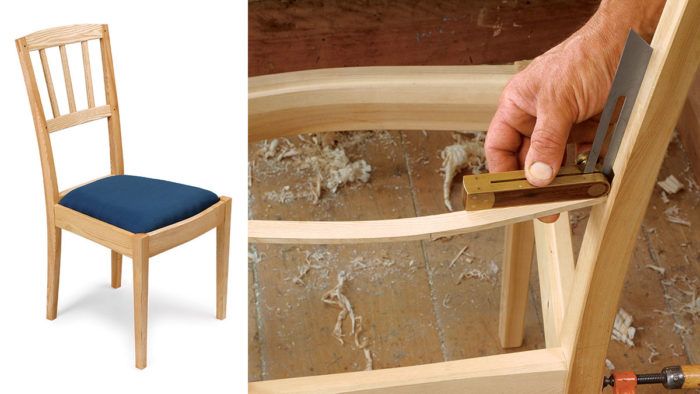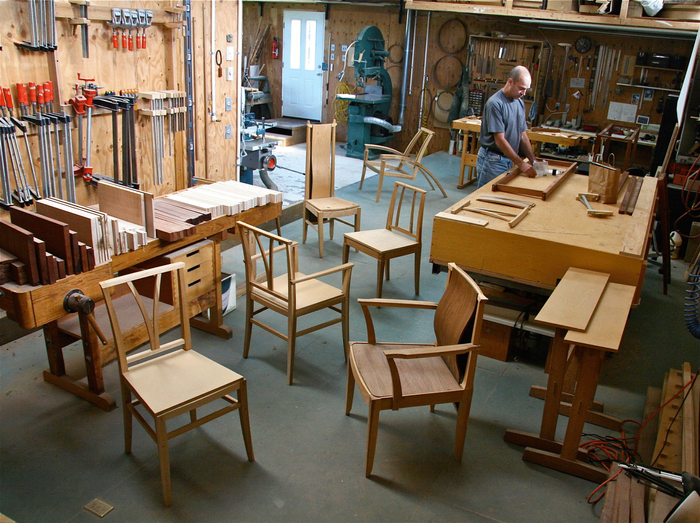Build a Simple Side Chair
This basic side chair won't compromise comfort, strength, or style.

Synopsis: Even the most basic chair must support a body comfortably and be strong. Dealing with angled joinery and curved parts exposes you to making patterns, full-scale drawings, mock-ups, and thinking in three dimensions. Also, chairs are great for improving hand skills such as fitting joints and smoothing curves. All the pieces are sawn; no steam-bending or laminating parts is involved in the construction. Build one or two, and youll be tweaking this design to reflect your own tastes and needs. The article also includes details on cutting angled seat-rail and lumbar-rail mortises.
Even the most basic chair must support a body comfortably and be strong enough to take lots of rocking and rolling. This likely involves angled joinery; add some grace to the design, and you’re probably working with curved parts as well.
A lot of woodworkers shy away from making chairs, but there are many good reasons for building them. Design a dining table or a desk, and it seems only fitting to complete the project by building the chairs, too. Dealing with angled joinery and curved parts exposes you to making patterns, full-scale drawings, mock-ups, and thinking in three dimensions. Also, chairs are great for improving hand skills such as fitting joints and smoothing curves.

By design, this chair is not overwhelming in its joinery or curves. Build one or two, and you’ll soon be tweaking the design and construction to suit your own tastes and needs.
Rather than steam-bending or laminating parts, I designed all of the curves to be sawn from 8/4 stock. To give the back a dramatic splay toward the top, I used a design trick common to chair makers: rotating the curved rear legs inward by 4°. Also common to many chairs, the seat narrows toward the back to give it a graceful look and tilts slightly backward for comfort.
By carefully working out the curve of the rear legs, the tilt of the seat, and the taper and angle of the front legs, I was able to keep the joinery square in the side view, avoiding compound angles in most cases. This type of chair requires a slip seat, basically an upholstered platform that sits in a rabbet in the seat rails. You can make your own or just cut out a plywood platform and bring it to an upholsterer.
Strong and beautiful chairs can be made from a variety of woods. Mahogany and walnut have been high-style choices for centuries. Ash, maple, beech, cherry, and oak are equally good in terms of strength, although each has a unique color and grain that impact the design. Softer woods are to be avoided. For this chair, I chose white ash because of its exceptional strength along the grain and its pronounced grain pattern. However, white ash is tough to work. Cherry or walnut are more forgiving with more subtle grain patterns.
Both 8/4 and 5/4 stock are required, ideally from the same tree for harmonious color and grain. Wide stock will yield more parts with less waste if you stack the curved rear legs side by side and cut the front legs from the odd shapes in between. Plan on cutting extra legs for trial setups and for backup in case of miscuts. Grain that follows the outline of the leg is ideal. Avoid wild grain that angles sharply off edges and defects that might weaken parts.
From Fine Woodworking #166
For the full article, download the PDF below.
Fine Woodworking Recommended Products


Dividers

Sketchup Class








Log in or create an account to post a comment.
Sign up Log in